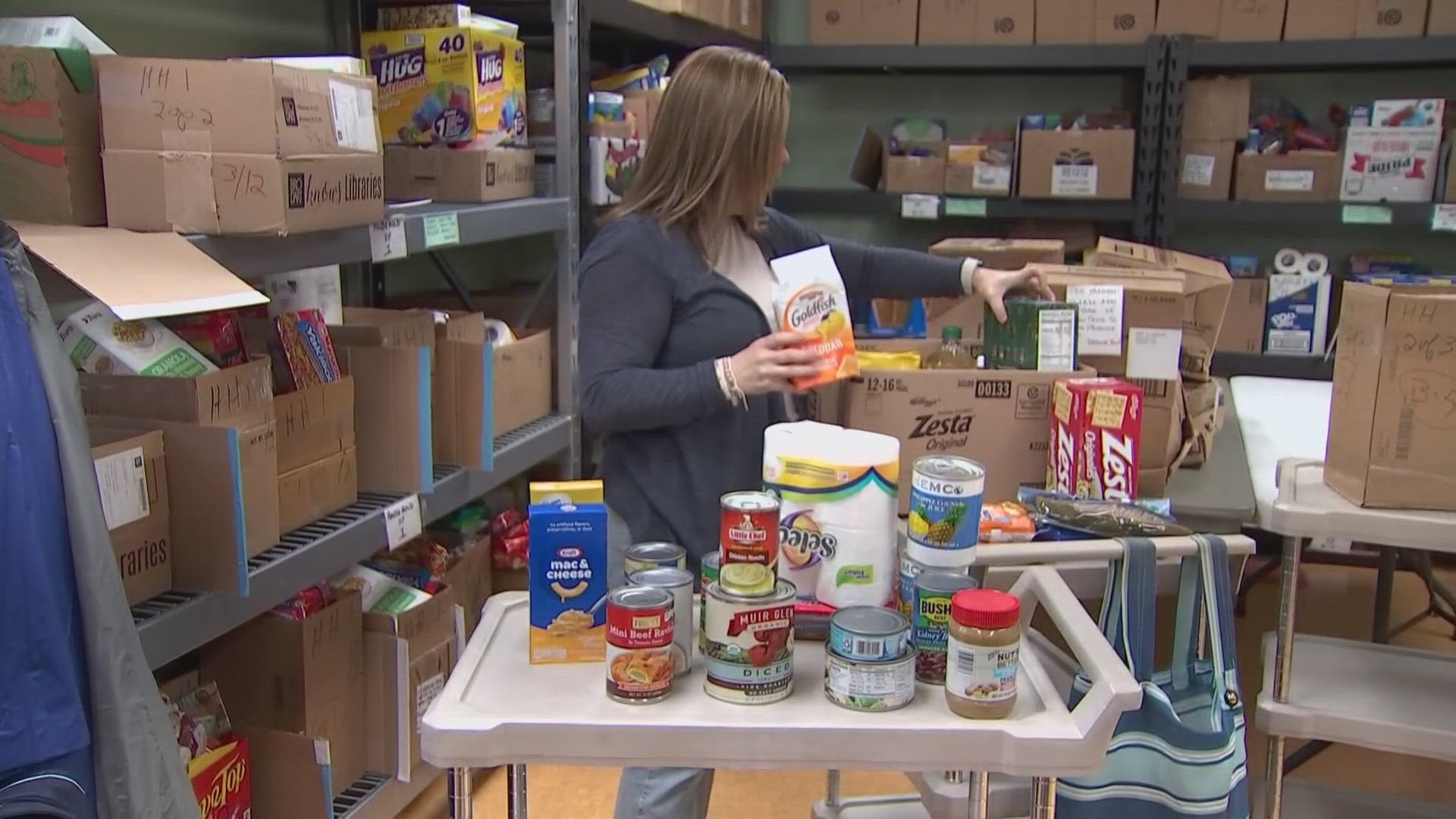COLUMBUS, Ohio — Ohio’s network of food pantries served more visitors at its emergency food pantries than at any time in its history, according to Joree Novotny, the executive director of the Ohio Association of Foodbanks.
From October through December 2023, Ohio food banks served more than 3.8 million food pantry visitors, 30% of which were children, according to Novotny.
By comparison, during the same quarter in 2022, Ohio’s food banks served 3.1 million food pantry visitors. Food pantries in Ohio have never broken 3 million visitors in one quarter.
According to the U.S. Census, hunger in Ohio is above the national average. Ohio sits at 11.5% while the U.S. average is 10.4%.
If you factor in race, 25% of African Americans are considered food insecure compared to 18% of the Latino population.
Hunger in Ohio is a growing problem and it’s evident at the Mt. Sterling Community Center foodbank. Volunteers hand out boxes of food to so many new people, they plan to triple the size of the food pantry this year.
“We have totally outgrown this space big time. To see the numbers we see every month, above 150 families being served, that's astronomical numbers in my opinion for a small community like this. It is not getting any better and I don't see it getting any better unless miracles happen,” said Megan Barker Witteman, executive director of the Mt. Sterling Community Center.
In 2023, she says the food pantry had 10,207 visitors. That’s an increase of 2,200 visits from 2022.
The pantry serves 11 zip codes and reports between three to five new families every week.
The people waiting in line are defined as food insecure. The U.S. Department of Agriculture defines that as a person who lacks access to enough food and water to meet one's basic needs.
The pantry says not only are they seeing more people in their cars waiting for food, but they’re also seeing more families with children.
“It's just absolutely heartbreaking to see young kids come through and know this may be their only meal they get,” said Barker Witteman.
Pantries across the state live a life of uncertainty, as they have no idea what food they are receiving from food banks.
That’s an issue because much of it is not the healthiest foods, including cookies, crackers and sugary cereals. Fresh vegetables and meat are considered a delicacy.
“The only reason it comes to this pantry is because it's at no cost. If it was at a cost, I would not be purchasing those snacks for people but it is something to put in their bellies and it's free,” said Barker Witteman.
Food pantries across the state are facing a food and funding crunch, said Novotny.
Lawmakers in Washington have yet to approve the Farm Bill, a major source of funding that helps nearly 300 foodbanks across the state buy food from foodbanks.
“We don't have any permanent fix right now without a permanent farm bill,” said Novotny.
That means food pantries are operating on budgets from 2018 which doesn’t account for inflation. Without more money, Novotny said, tough decisions will follow.
“We won't be able to keep up with the need we are seeing. We won't have enough food coming into our system. Food costs are higher than they were six years ago when the last farm bill was passed,” she said.
Ohio is fortunate in the fact that lawmakers recognize hunger in Ohio as an issue. In 2022, lawmakers approved $40 million in the American Rescue Plan to prop up food banks.
“The $40 million has all been expended and we are staring down a new fiscal year without those dollars that keep us afloat,” said Novotny.
In the 2024-2025 biennial budget, Ohio Foodbanks requested from the state $50 million to meet their food needs.
The state countered with $32 million.
Ohio isn’t one of the hungriest states. That belongs to Arkansas, Texas, Mississippi, Louisiana, South Carolina, Oklahoma, West Virginia, Kentucky, Alabama, and Missouri., according to the USDA.
But the numbers show the Buckeye State is heading in that direction as more Ohioans struggle to earn enough money to feed their families.
If you would like to donate, click here to make a monetary donation.

